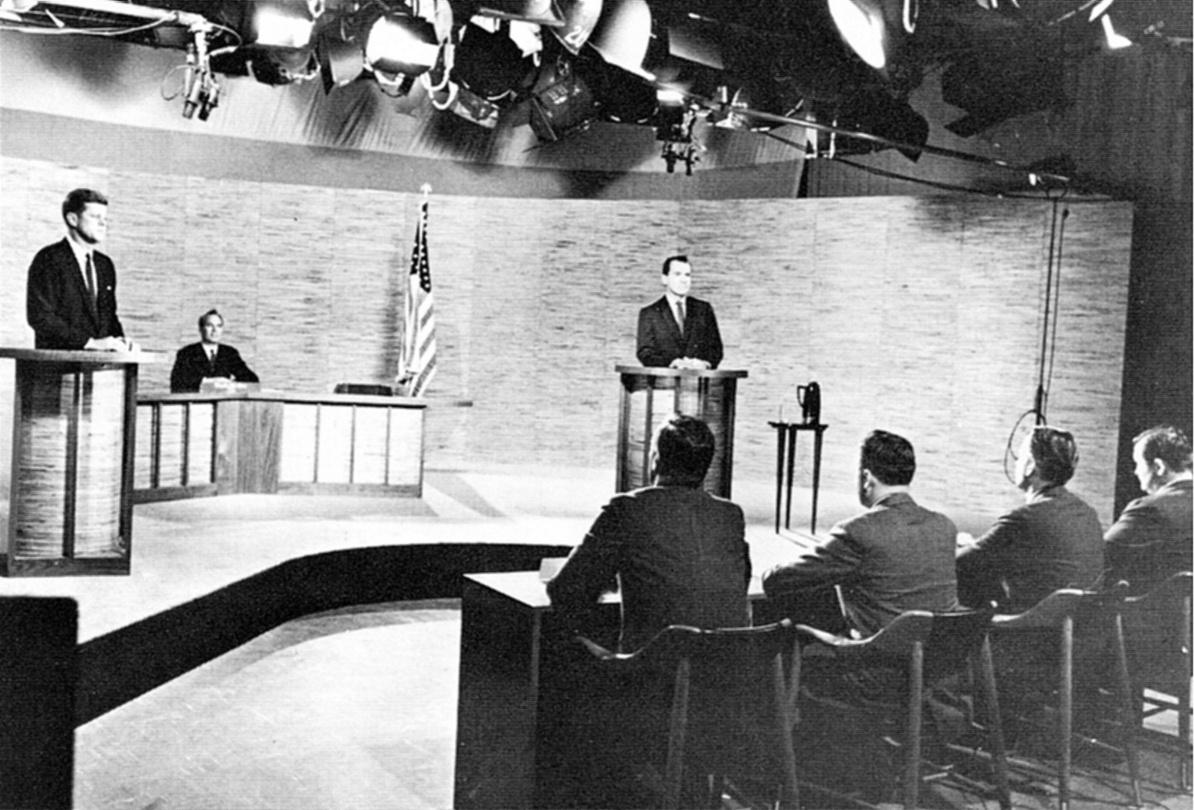An Alternative to the Presidential Debate

John F. Kennedy and Richard Nixon debate in 1960. Source: Wikipedia.
Traditionally, the televised U.S. Presidential Debates involve two or more candidates answering questions proposed or relayed by one or more debate moderators. The questions can be highly subjective since they are usually written or chosen by the network, and the quality of the debate depends heavily on the skills of the moderator and the selection of questions. The candidates’ responses are usually well-rehearsed beforehand, and it is easy for a candidate to rattle off his or her position on an issue, and why it is superior to the opponent’s position. Also it is quite easy for a candidate to dodge the question, or just give a well-rehearsed answer to a different question. But oftentimes, in order to make the debate more interesting, the moderator(s) will try to trap the candidate into contradicting him or her self. The moderator will ask the candidate a question, and then compare the response to a soundbite that the candidate might have given weeks, months, or years beforehand. This puts a candidate in the uncomfortable position of trying to defend a past statement without looking like a “flip-flopper.” This may appear to be interesting television for some, but it is hardly a constructive process for educating the American voter on who would make the best President.
Therefore, I propose (perhaps not originally) an alternative to the conventional debate, which I first heard described by New York Times columnist David Brooks on NBC’s Meet the Press on April 20, 2008. Mr. Brooks proposed a format where the candidates would be presented with some issue, and have to work out a solution in front of an audience. I’ll try to describe one such example in more detail. In the debate alternative, each candidate would be presented with what is essentially a hypothetical case study. The candidates would be told days in advance that the case study will involve, for example, a foreign policy crisis. The candidate will then be able to assemble a small staff of 3-4 advisors of their choosing. At the event, the candidate will be presented with a detailed description of the case. For example, the candidates might be told that nuclear weapons in North Korea have suddenly been made operational and are pointed toward South Korea and Japan. The candidate will work with their advisors for 20-30 minutes and discuss a measured response to the scenario. The discussions in each camp will be broadcast live and the viewer will be able to hear how the candidates lead the discussion with their teams and what questions they ask, both to their advisors and to the moderators that can provide more detail about the scenario. The voter will learn about the candidate’s temperament, his/her skills in leading a constructive discussion, and will get a more realistic illustration of how the candidate might react to an actual crisis.
Not only does this debate alternative produce more relevant information for a potential voter analyzing who would make the best President, but I argue that it would produce more entertaining television, and improve declining debate ratings. Consider, for example, the television show “The Apprentice”, which in its first incarnation was a ratings juggernaut. The show captivated viewers by putting business professionals and MBA students into real-life situations. Similarly, putting presidential candidates into more realistic situations would make for great entertainment and higher ratings, with the added benefit of serving as a better indicator of presidential ability.
If you would like to see this or another alternative to the traditional presidential debate for the upcoming election and future elections, please comment and share this article with others.
0 comments
Kick things off by filling out the form below.
Leave a Comment